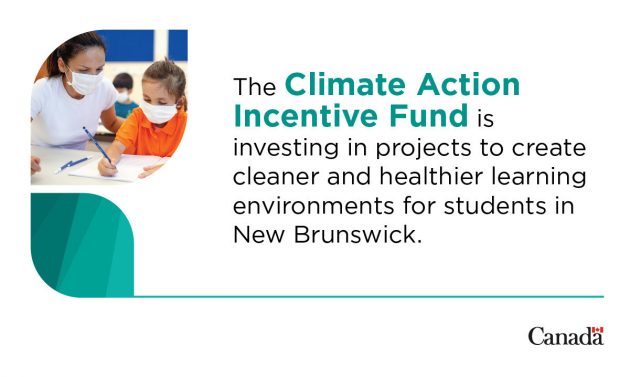
Feds invest $2M to improve energy efficiency in N.B. schools
by CM Staff

This funding comes from proceeds from the federal carbon-pollution-pricing system

The Government of Canada supports cleaner, more energy-efficient classrooms for New Brunswick students. (CNW Group/Environment and Climate Change Canada)
OTTAWA, ON, Dec. 7, 2020 /CNW/ – The federal government will provide approximately $2 million through the Climate Action Incentive Fund to help schools in New Brunswick cut pollution and save money on their energy bills.
“Students are champions at taking climate action and coming up with initiatives to help their homes, schools, and communities cut pollution, reduce waste, and protect nature,” said Dominic LeBlanc, president of the Queen’s Privy Council for Canada and Minister of Intergovernmental Affairs, in a prepared statement. “They will benefit from cleaner and more energy-efficient classrooms thanks to the revenues from the price on pollution. This investment will help us fight climate change and create job opportunities for local workers in Florenceville, Bathurst, Fredericton, and Woodstock.”
Through this funding, students in five schools in New Brunswick will benefit from cleaner air, better insulation, newer heating and cooling systems, and other energy-efficiency projects. For example, Priestman Street School, in Fredericton, will receive $647,000 to install energy-recovery ventilators and improve its insulation; Woodstock High School, in Woodstock, will receive $520,000 to improve ventilation-control systems and its insulation; and École Sainte-Anne, in Fredericton, will receive $500,000 to upgrade its heating system and ventilation-control systems. Through these investments, students and teachers will enjoy a cleaner, more comfortable learning environment.
This funding comes from proceeds from the federal carbon-pollution-pricing system. All proceeds raised from the system go directly back to the jurisdictions from which they were collected. Approximately 90% of revenues go back to families through a Climate Action Incentive payment, and the other 10% is invested in pollution-reduction projects—such as these ones—proposed by municipalities, universities, schools, and hospitals.